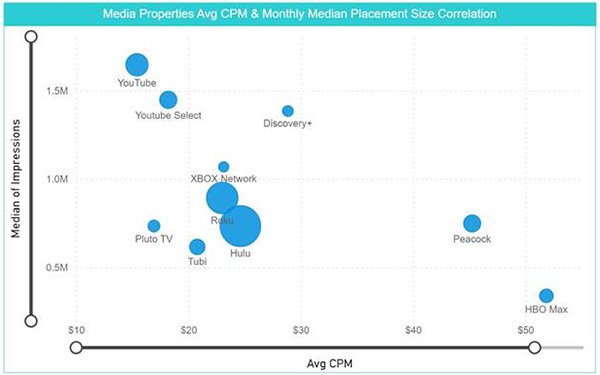
Netflix has an opportunity to do well in the
connected TV (CTV) space in terms of its upcoming advertising CTV option if it can get to a $25 to $45 cost per thousand viewer pricing, according to an assessment from Standard Media
Index.
SMI says Netflix has a clear opportunity to hit this "sweet spot" -- an area that few other connected TV/digital media sellers occupy.
Looking at average CPMs from
June 2021 to May 2022, SMI says that Hulu is just below this mark at $24 CPM in terms of average CPM. At the high end is HBO Max -- its advertising-supported option -- at more than $50.
>Only two services fall in between these numbers: Peacock at near $46 CPM and discovery+ at $28.
SMI says Roku comes in at around $23; Tubi, $21; and Pluto, $17. For Peacock and HBO Max,
SMI says exclusive content allows for higher CPMs compared to other services.
advertisement
advertisement
At the low end is YouTube, at $16, while its more premium curated content -- called YouTube Select -- is at
$18.
However, YouTube is the current leader in median monthly impressions of around 1.7 million, followed by Discovery+ at 1.4 million; Roku with 900,000, and Hulu and Peacock, each with
700,000. HBO Max is at around 250,000.
By way of a proxy for Netflix, SMI also included Microsoft's Xbox Network in its results -- with a $23 average CPM, and 1.1 million median monthly
impressions.
Netflix recently struck an advertising partnership deal with Microsoft.
Standard Media Index (SMI) captures actual invoicing data from all major holding companies and most
major independents, representing 95% of national brand ad spend.